3 Ways Commercial Doors Contribute to Biophilic Design
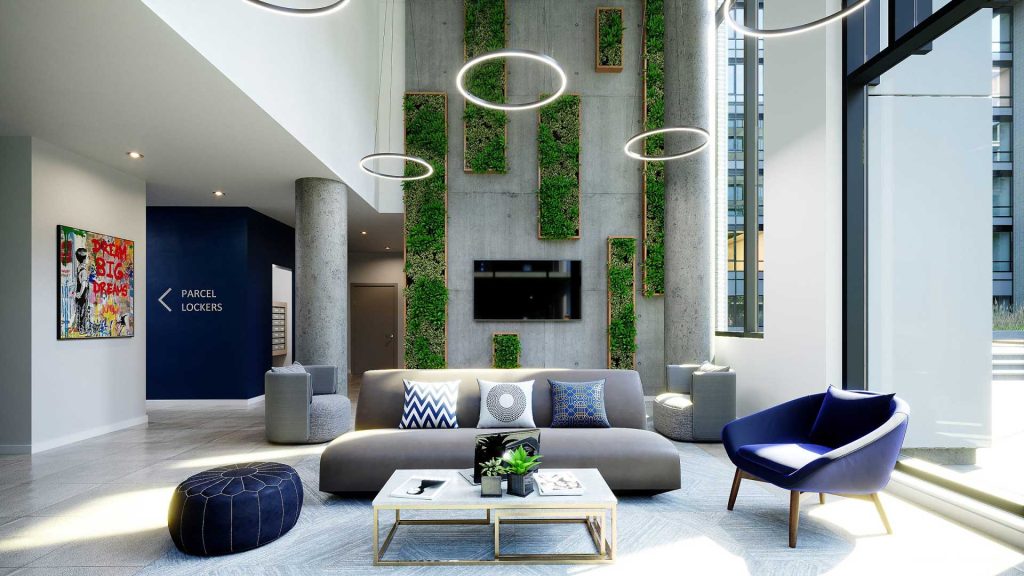
Biophilic design is a hot term in the world of interior design right now. You may have heard it doing the rounds – but what does it mean? And how does it relate to commercial doors? This is what we’ll be exploring in our latest blog – so, get yourself a hot drink and read on.
What is biophilic design?
Biophilia relates to nature and integrating natural elements into the built environment to create more harmonious, eco-friendly and visually appealing spaces.
This could be as simple as turning furniture/workstations to face the windows to maximize outdoor views – or it could look like incorporating a living wall or a water feature into a space, or turning outside areas into work or relaxation zones.
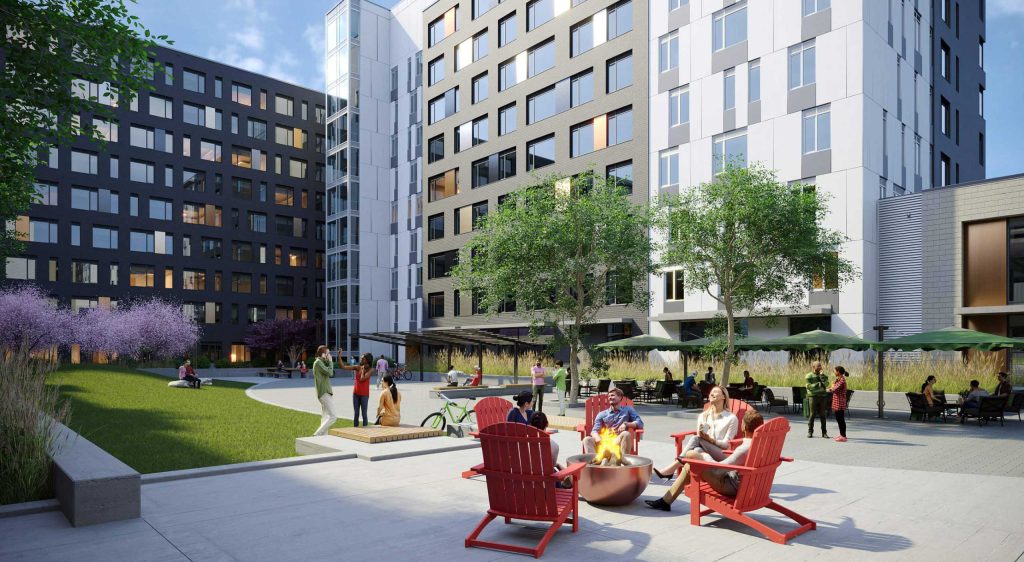
Is biophilic design good for people?
It is. Biophilic design not only elevates spaces, it provides a breath of fresh air for inhabitants. A recent BRE (Building Research Establishment) report shows that employees who work in biophilic-designed offices report a 15% higher level of wellbeing, are 6% more productive and are 15% more creative overall.
As to be expected, developers, landlords and building owners are increasingly embracing this trend as a way to attract new customers.
3 ways to incorporate biophilic design into your space with doors
Consider using natural materials
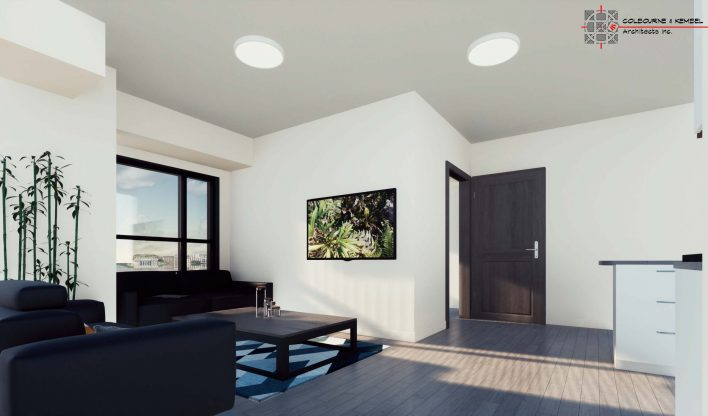
Wooden doors are crafted from nature’s materials and offer a tactile experience when touched, evoking a sense of nature and organic beauty. Wood is also versatile, timeless and worth the investment; it instantly imbues a space with warmth and a sense of natural beauty.
There are various finishes available for commercial doors, too: from oak and mahogany to reclaimed wood, all of which boast unique characteristics and can be matched with a variety of interior styles.
Opting for doors with a visible grain pattern or a textured surface that mimics the look and feel of organic elements is a great way to incorporate biophilic design into your space.
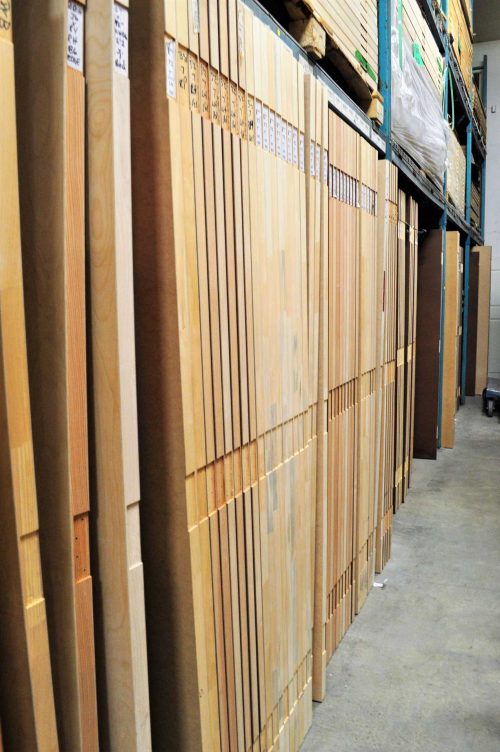
Explore glazing and glass panelling
Glass is an always-smart design element, allowing natural light to penetrate and brighten interior spaces and creating a seamless transition between indoor and outdoor environments.
Frosted or textured surfaces will also allow natural light to filter through while providing privacy for your building’s occupants.
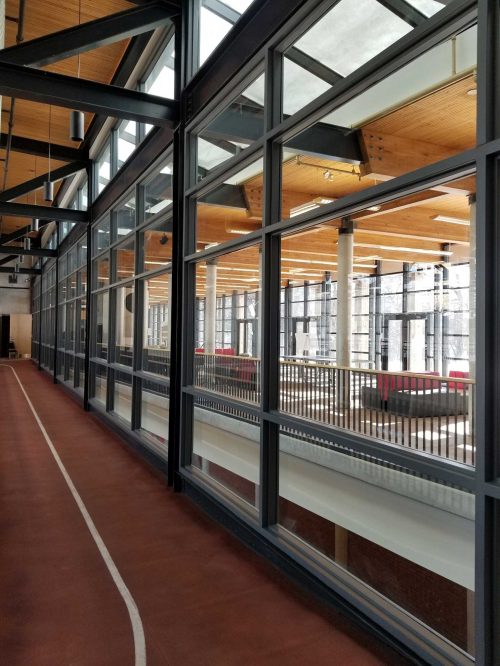
Consider opting for glazed doors – or doors with large windows – that will allow for unobstructed views of the surrounding natural environment.
In an ideal world, the outside of any building would be filled with trees and greenery – but even if your outlook only allows for a view of your parking lot, it is still a valuable connection with the outside world. Plus, a blue sky brings natural beauty to any location!
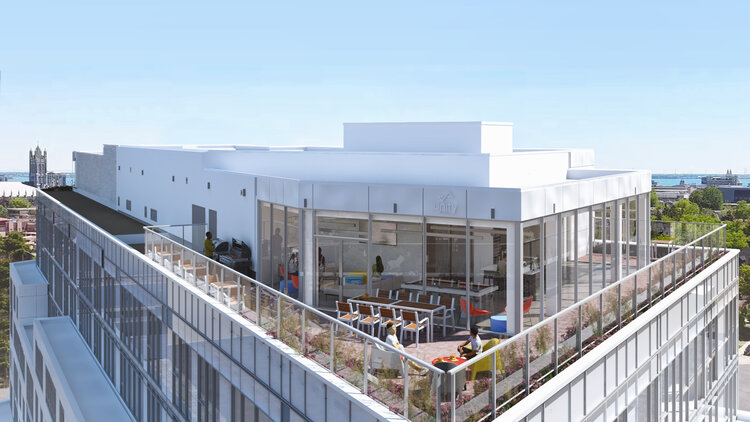
Choosing door colours that reflect shades from the natural world (think earth tones, soft greens, or soothing blues) can also contribute to a biophilic atmosphere.
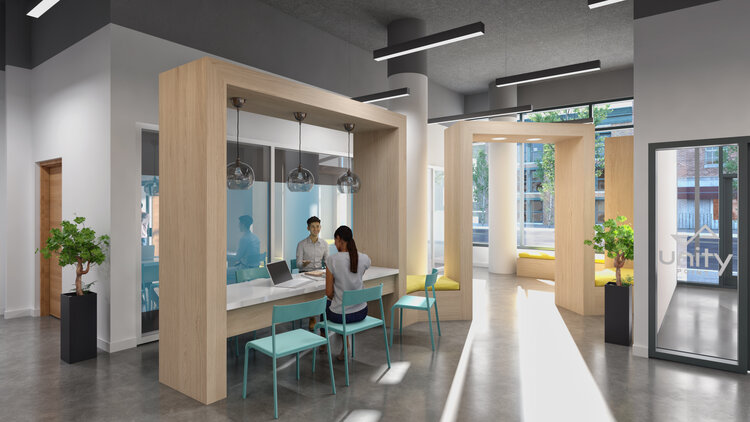
Look into incorporating extra sensory elements
Consider having sound-proofed doors installed. These are designed to minimize noise and create a sense of tranquillity. Once you have these in place, then incorporating natural sounds into your surrounding space – such as soft wind chimes or bubbling water from a water feature – will also boost the biophilic experience.
You can also think about bringing other elements into play near to your main doors, such as living walls or vertical gardens. Living walls are covered with plants and provide a direct representation of nature indoors. By placing doors that open up to these green walls, you create a visually striking and immersive experience that will connect your visitors or inhabitants with nature every time they enter or exit the building.
Incorporating door designs with organic or flowing shapes, inspired by natural patterns like curving branches or flowing water, will also up the biophilia factor. You can even think about exploring hardware – door handles, knobs, and pulls – inspired by natural shapes and materials.

Conclusion: open up to biophilic design elements
By embracing biophilic design, businesses can create spaces that are visually captivating, uplifting, and nod to nature. From wood finishes to natural textures and the strategic use of glass, doors can play a big part in a biophilic scheme, creating a harmonious and contemporary atmosphere that leaves a lasting impression on everyone who passes through the building.
Select can help
If you have any other questions about biophilic design, we are just a call away. We’ve been Canada’s leading supplier and distributor of high-performance, cost-effective doors, frames and hardware for more than 25 years and we’d love to support you too.